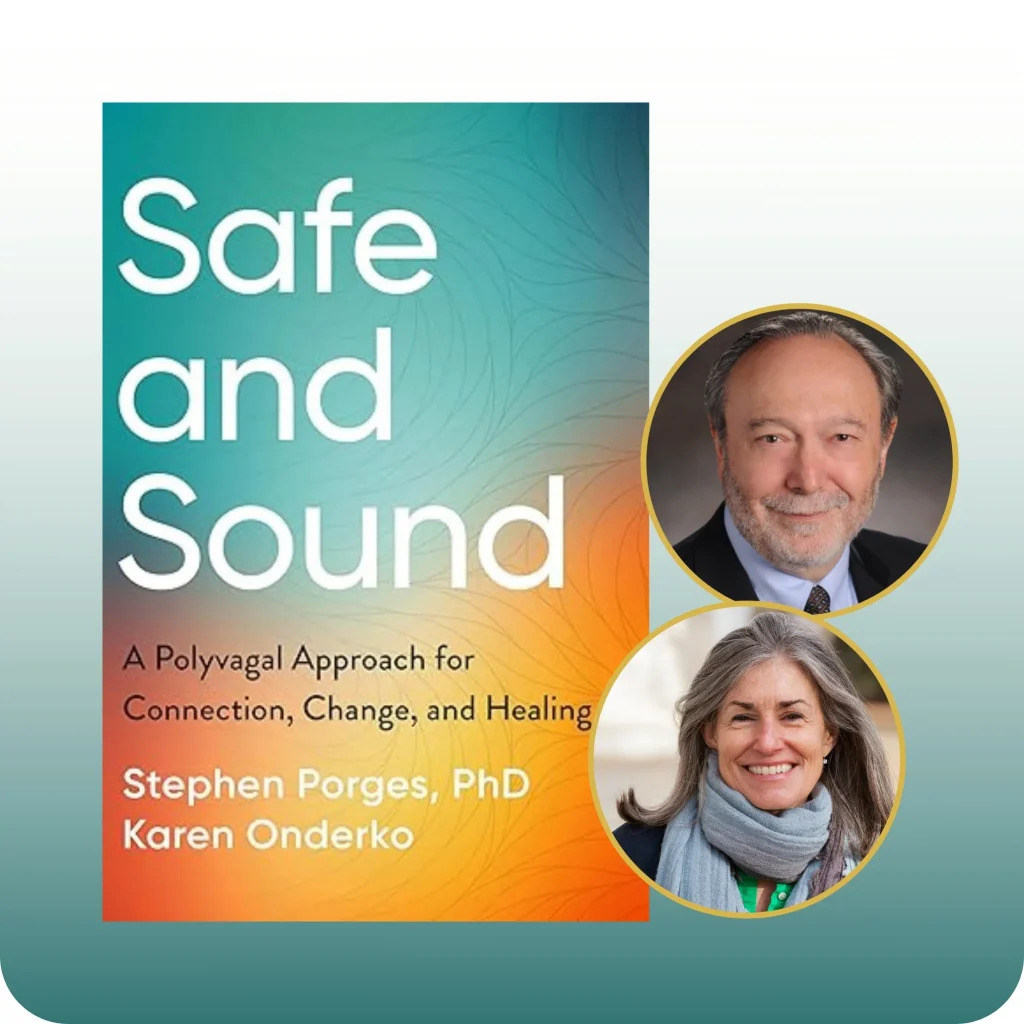Courtesy of Sounds True
The nervous system is on our side — even though it may not always feel like it.
— Karen Onderko
For clients who are stuck in chronic states of anxiety, shutdown or emotional reactivity, despite their best efforts and the best interventions, what’s missing may not be another technique, but a regulated nervous system.
In this episode of Sounds True’s Insights at the Edge, host Tami Simon sits down with Dr. Stephen Porges and Karen Onderko to explore their new book, Safe and Sound: A Polyvagal Approach for Connection, Change, and Healing. Together, they delve into the theory, development and clinical applications of the Safe and Sound Protocol (SSP), a powerful, auditory-based intervention designed to help regulate the nervous system and open the door to connection.

Safe and Sound: A Polyvagal Approach for Connection, Change, and Healing is now available for purchase!
Why SSP Matters for Providers
Developed by Dr. Porges, the SSP is an evidence-based listening therapy designed to shift the nervous system out of chronic defense and into a state of calm. Using specially filtered music, it trains the system to detect and respond to cues of safety, laying the groundwork for deeper therapeutic work.
The SSP is delivered in partnership with a trained provider, often alongside other modalities like EMDR, Somatic Experiencing or occupational therapy. As Onderko says, it works as “an accelerant” to other therapies, helping clients access the resources they need to heal more effectively.
Clinicians across disciplines are integrating SSP into their work — and seeing meaningful results among the more than 200,000 clients who’ve gone through the SSP.
“SSP pairs really well with almost any other therapy because what it’s doing is allowing that client to have a sense of safety in their body,” says Onderko, “and all healing begins with safety.”
Key Topics Discussed in This Episode:
- Safety is biological. Our nervous system evolved to seek safety through connection. When we feel safe — through facial expression, vocal tone and gesture — our physiology shifts, enabling healing and engagement.
- Sound is a portal to regulation. SSP uses filtered music to activate the ventral vagal system and middle ear muscles, which helps the listener tune into human voice frequencies and tune out low-frequency sounds that can be associated with threat.
- Trauma can make safety feel unsafe. For some clients, especially those with a history of severe trauma, cues of safety can initially trigger feelings of vulnerability.
- SSP works alongside other therapies. The SSP is not necessarily a replacement, but a powerful adjunct intervention.
- Healing isn’t always top-down. Unlike traditional talk therapies that rely on cognition, SSP works from the bottom up, supporting nervous system flexibility through nonverbal, physiological change. “The provider just needs to hold the space, needs to be comfortable, welcoming,” explains Dr. Porges. “The music will do the rest.”
- Everyone deserves to feel safe. Dr. Porges emphasizes, “It’s our evolutionary heritage to feel safe. And our culture has compromised that.”
Whether you’re a clinician curious about bottom-up approaches or someone on your own healing journey, this conversation sheds light on how sound, safety and science intersect with the SSP to create real change.
Listen to the full episode to hear more about the neuroscience of safety, the surprising effects of SSP in clients with conditions such as Parkinson’s disease and chronic pain, and how providers can use the SSP to unlock profound transformation.




 © 2025 Unyte Health US Inc.
© 2025 Unyte Health US Inc.